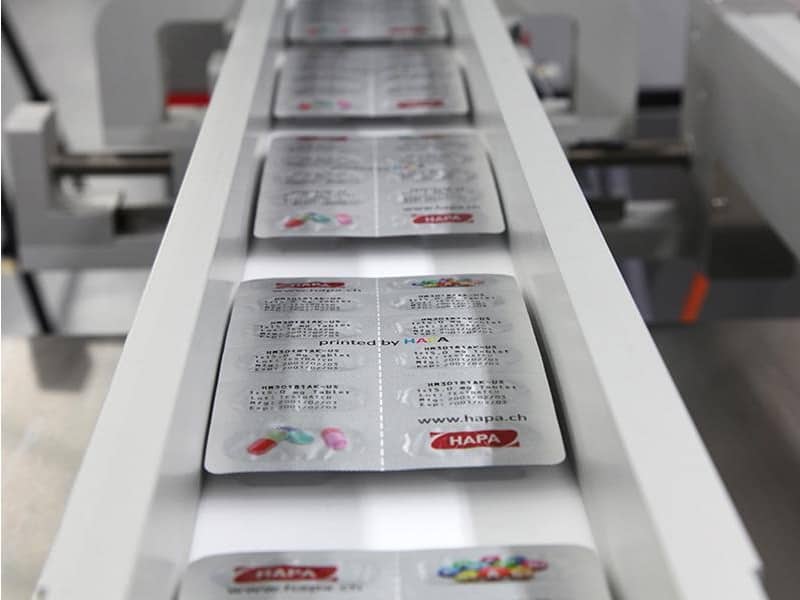Customized just-in-time printing
For anyone who is producing high cost, low demand products, or for any other reason is producing small batch sizes, customized just-in-time printing may be useful.
Just-in-time printing is when variable data is printed after the product is ordered, instead of pre-printing packages for stock. This applies to test batches, orphan drugs, or other types of medications with low demand and/or varying customer base from market to market. Just-in-time printing is in the pharmaceutical industry also called late stage customization.
Late stage customization is a term used for tailoring packaging for specific markets. This means that products are produced in large quantities for stock but not completed for sale. Only once an order is placed, the product will be completed with customized data specific for the market in question.
There are several benefits to implementing late stage customization, and it has a positive effect on the entire supply chain. Some of the advantages gained are:
Less inventory.
If you are selling your product to e.g. multiple markets or in various package sizes, you need to print different product and market specific data, according to local regulatory requirements. This often results in many different variations on stock. If you wait to print the variable data till after the product has been ordered by the end-customer, you can have just one product in stock, thus reducing needed storage space.
Leaner production and reduced lead-time to end-user.
With late stage customization you get a leaner production process as the needed production lines can be reduced, the SKU process can be simplified, and time to market is drastically reduced.
Less or no waste.
There will be less waste in the production, as set up waste related to pre-printed material is eliminated. Furthermore, you will only print and deliver what is demanded in the market thus overproduction and expired product in the supply chain can also be disregarded.
Higher cost efficiency.
The limited waste will also have a positive impact on your costs. When you can produce a large badge of product but wait to print the customized data until an order has been placed, you will eventually get lower unit costs. Moreover, costs concerning the logistics handling can also be reduced.
Lower environmental cost.
Late stage customization is also beneficial to the environment. The production of aluminium lidding material for blister packs is highly energy intensive leaving a significant ecological footprint. With late stage customization any waste concerned with pre-printed aluminium foil is eliminated. The same is the case with any surplus production or expired product in the supply chain. Altogether it leaves a smaller impact on the environment.
On a final note, it is important to notice that late stage customization is ideally suited for small batches with many product variants, but not necessarily the best solution for all situations.
If running medium sized batches, inline printing with a digital HAPA printer on the blister line provides a more cost-efficient setup with high packaging line efficiency.
If primarily running very large batches with few batch changeovers and few product variants, pre-printed foil may be the most economical solution. Unless one is considering the future-proofing possibility to print serialized data on each blister card; or the possibility to eliminate the need for a mechanical embossing station, used in many lines, to include batch and expiry data on pre-printed foil.
For more information about our printing solutions, click here or contact us today for a discussion about how we may solve your challenges.
Press the button below if you wish to download the article as pdf.

